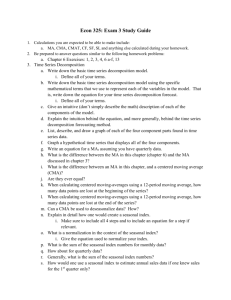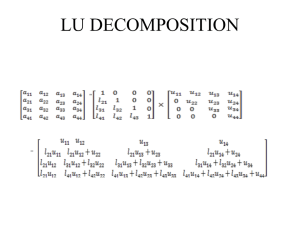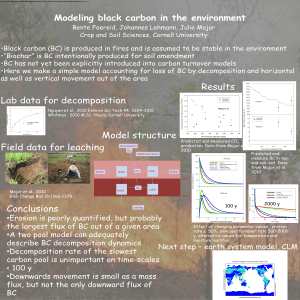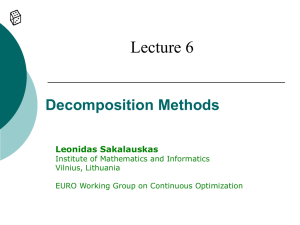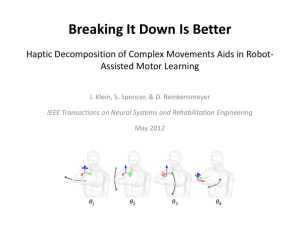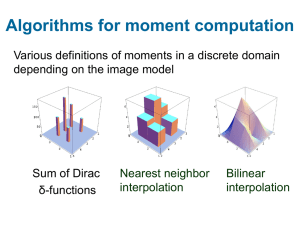EMD
advertisement
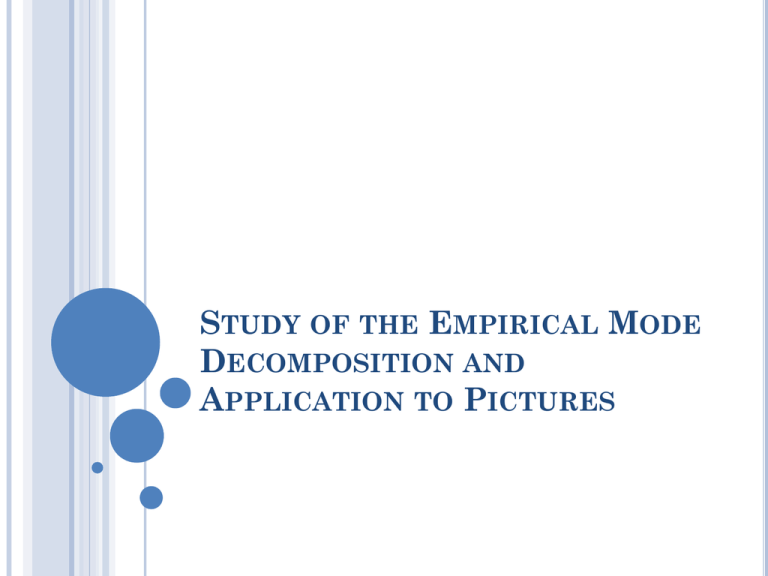
STUDY OF THE EMPIRICAL MODE DECOMPOSITION AND APPLICATION TO PICTURES EMPIRICAL MODE DECOMPOSITION (EMD) Pioneered by N.E. Huang in 1998 Nonlinear and data-driven technique of nonstationary signals decomposition Firstly defined for mono-dimensional signals Main idea: to represent a signal as a sum of components, each of them being a zero-mean AMFM function PURPOSE OF MY INTERNSHIP Understand the principle of EMD in monodimensional case and compute the algorithm Develop an algorithm for bi-dimensional signals Try to identify matters in extension of EMD to tri-dimensional signals EMD OF MONODIMENSIONAL SIGNALS PRINCIPLE Let x(t) be a mono-dimensional signal: 1- Identify all local maxima of x(t): Do the same thing with the local minima: 2- Interpolate between maxima ending up with some envelope e max (t): Likewise for the minimal envelope e min(t ) : 3 - Compute the mean m(t) e min (t) e max (t) 2 4- Extract the detail d(t) = x(t) – m(t) 5- Iterate on the residual m(t) until the number of extrema in the signal is less than 2. We finally obtain the decomposition of the signal: x(t ) dk (t ) r (t ) k INTRINSIC MODE FUNCTIONS The functions dk (t ) we want to obtain by this decomposition are called Intrinsic Mode Functions (IMF) and they satisfy two conditions : In the whole data set, the number of extrema and the number of zero crossings must either equal or differ at most by one. At any point, the mean value of the envelope defined by the local maxima and the envelope defined by the local minima is zero. SIFTING PROCESS In practice, the details dk (t ) obtained are not necessarily IMFs. We have to refine by a Sifting Process: Iterate steps 1 to 4 upon the detail d(t), until this can be considered as an IMF. The corresponding residue is then computed and step 5 applies. EMD OF BIDIMENSIONAL SIGNALS The picture can be considered as a depth map in 2D: PRINCIPLE 1. 2. Identify local extrema of f(x,y) Interpolate between minima (resp. maxima) ending up with some envelope e min( x, y) (resp. e max( x, y)) 3. 4. 5. e min( x, y ) e max( x, y ) Compute the mean m( x, y ) 2 Extract the detail d(x,y) = f(x,y) – m(x,y) Iterate on the residual m(x,y) RESULTS GRAYSCALE PICTURE DECOMPOSITION Mode 1 Mode 2 DECOMPOSITION Mode 3 Mode 4 DECOMPOSITION Mode 5 Mode 6 DECOMPOSITION Mode 7 Mode 8 DECOMPOSITION Mode 9 Residue CHECKING Original picture Sum of the IMF COLORED PICTURE (a) (a) Original red picture (b) Original green picture (c) Original blue picture (b) (c) DECOMPOSITION Mode 1 Mode 2 DECOMPOSITION Mode 3 Mode 4 DECOMPOSITION Mode 5 Mode 6 DECOMPOSITION Mode 7 Mode 8 DECOMPOSITION Mode 9 Residue CHECKING Original picture Sum of the IMF




